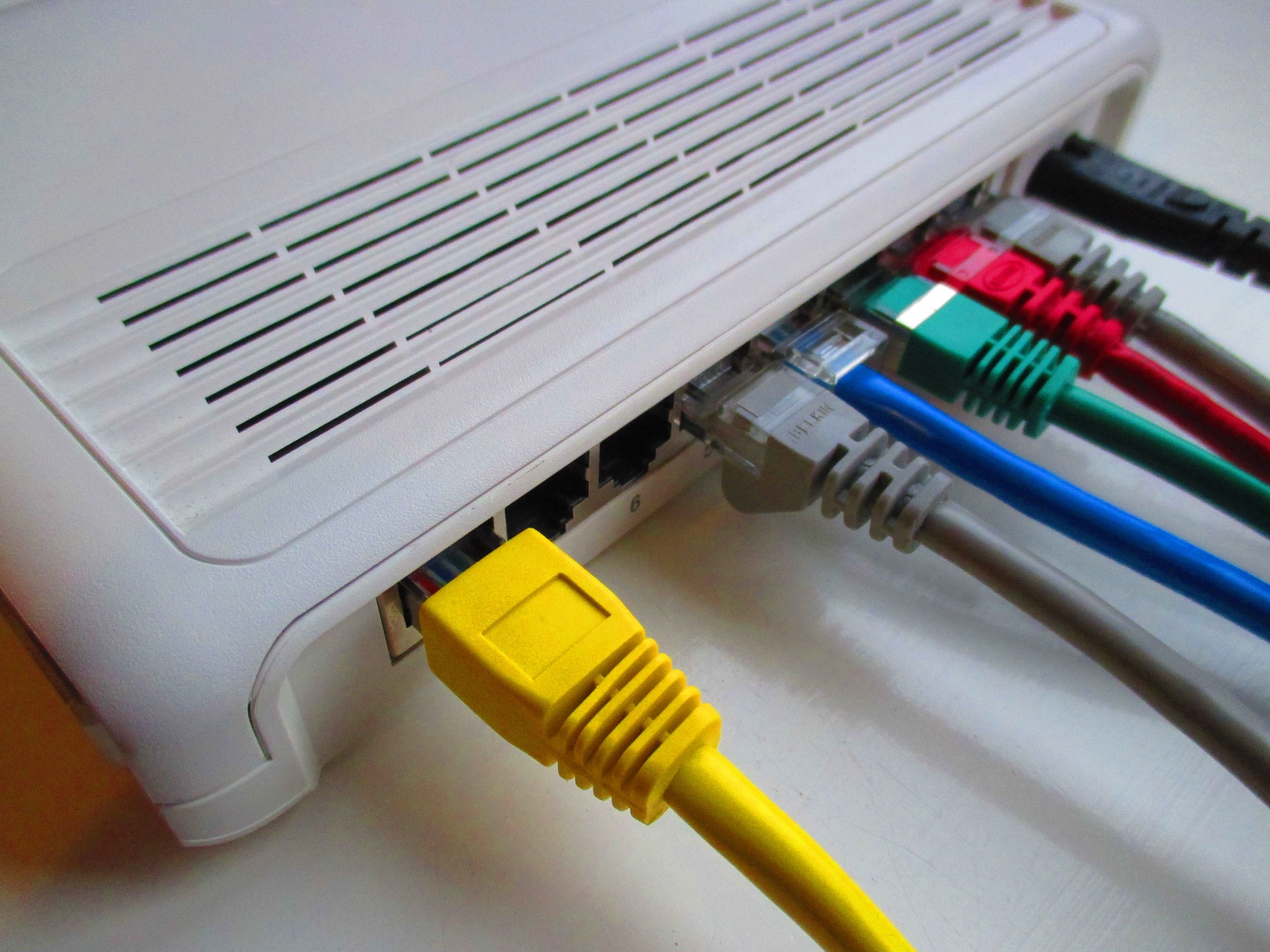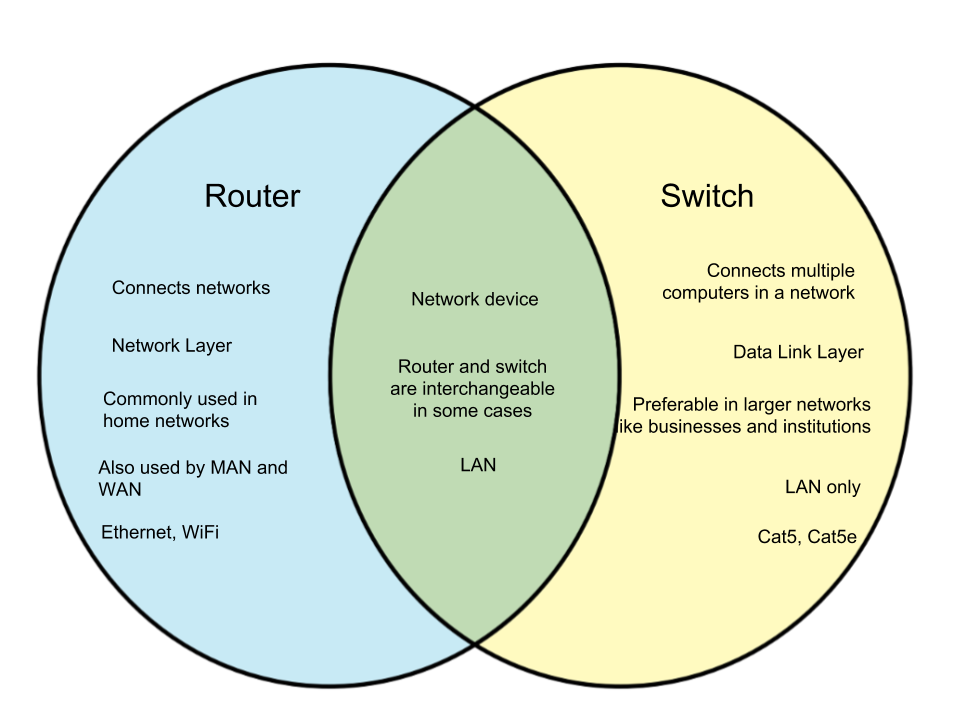
The router and switch are both options when it comes to connecting computers with other devices and networks. Both can be used with the same device but their functions differ from each other. Here’s how a router and switch are different from each other.
Router
The simplest definition for the purpose of a router is that it connects multiple networks together. A router forwards data packets on networks and is connected to at least two of them. These networks are typically LANs, WAN’s or a LAN with an ISP’s network. A single router is used to connect devices to the internet by routing them to a cable or DSM modem. It is commonly used in home networks and enables devices to connect to internet through either a wired or wireless connection.
Switch
A switch connects multiple computers within a network and is typically used in larger networks. For example, while a router is sufficient for home networks, a switch is more compatible for the needs of a business or a school. The switch filters and forwards packets between LAN segments.
Router |
Switch |
|
|---|---|---|
| Definition | A device used to connect networks together as well as direct traffic to ensure efficient network operation | A device used to connect multiple computers in a network; considered a more advanced device than the hub |
| Function | Connects networks, directs network data, and passes data between computers or a modem and computer | Connects multiple computers within a network, manages ports and VLAN security settings |
| Layer | Network Layer | Data Link Layer |
| Type | Networking device | Networking device and active device if used with software |
| Used in | LAN, MAN, WAN | LAN |
| Connections | Through Ethernet, WiFi | Through Cat5 and Cat5e |
| Speed | 1-100 Mbps for wireless and 1oo Mbps to 1 Gbps if wired | 10/100 Mbps, 1 Gbps |
| Data transmission | Packet | Frame or Frame and Packet |
Venn Diagram
